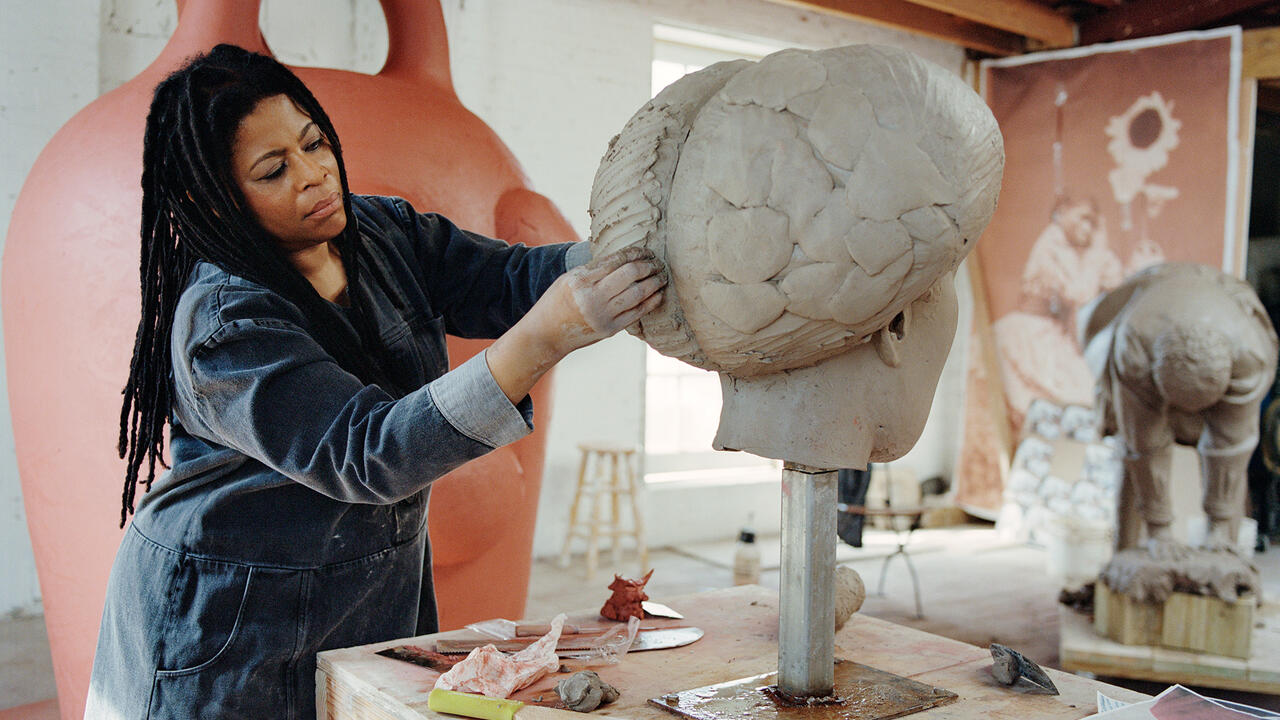Highlights 2015 – Brian Dillon
Claire-Louise Bennett, Anne Teresa De Keersmaeker and Niamh O’Malley: Brian Dillon shares his highlights from 2015
Claire-Louise Bennett, Anne Teresa De Keersmaeker and Niamh O’Malley: Brian Dillon shares his highlights from 2015

I’ve had what I’d have to say has been the oddest year of my adult life, and cultural production rather faded into the background as the summer took hold and things got stranger. With the result, I suppose, that the stuff that’s lodged in the memory, amid all the weirdness, must mean something solid – right?
The exhibition that’s stayed with me most intensely is Anne Teresa De Keersmaeker’s ‘Work/Travail/Arbeid’ at WIELS, Brussels, in the spring. Curated by Elena Filipovic and scored by Gérard Grisey’s composition Vortex Temporum (1994–96), this was an intimate and rigorous answer to the problem of choreography-as-exhibition. Dancers and spectators circulated like planets in an orrery, tracing arcs imagined in De Keersmaeker’s drawings and diagrams, embodying competing models of time inherited from the likes of Augustine and Bergson. Towards the end of the year Niamh O’Malley’s show ‘Glasshouse’, at the Bluecoat in Liverpool, confirmed that the Irish artist ought to be seen more often in the UK; her most recent drawings, sculptures and videos orbit a central concern with transparency and opacity, blindness and insight.

My book of the year – and maybe, in all seriousness, the decade so far – is Claire-Louise Bennett’s Pond, which was published in Ireland in the spring by Stinging Fly Press; a UK edition came out from Fitzcarraldo Editions in the autumn. Most of these 20 short stories (if that’s what they are) concern a nameless narrator transfixed by the objects, textures and atmospheres in her West-of-Ireland home. In a prose so precise it flips into florid abstraction, she obsesses about certain stones in a wall of her cottage, considers how best to arrange pears and redcurrants in a bowl, wonders how things will go when the last working control knob on her cooker gives up the ghost. If it sounds twee, it’s actually demented. There are comparisons to be made – notably with Samuel Beckett, Lydia Davis and Ben Marcus – but Pond also feels like little else around. Bennett claims the book is essentially a love story; there are great sumps of desire and loss lurking beneath her busy monologues.
A handful of other books provided genre-bending thrills or confirmed the abiding value of certain writers. Wayne Koestenbaum’s The Pink Trance Notebooks (Nightboat Books) is the product of a year in which the poet and critic gave up his usual more considered journal for a fragmented type of essay-poem that allowed him to ruminate upon the lures of language, past erotic embarrassments and the physical and mental plight of his ailing mother. (Koestenbaum is a joyful and fearless writer, and quite the rigorous flirt as a speaker; his talk at Raven Row with Bruce Hainley in June – on the occasion of the latter’s Larry Johnson show – was a digressive delight.) Just as hard to pin down genre-wise – shall we agree a resolution for 2016 and make do more often with ‘writing’? – was Max Porter’s Grief Is the Thing With Feathers (Faber & Faber): an intense and startling reflection on sudden bereavement, dark animism, childhood and literary form. I’ve been re-reading it in between essays from Portraits: John Berger on Artists (Verso): the product of scholar Tom Overton’s first trawl through Berger’s archive. There’s a second volume to come, and a biography. For now it’s enough to be reminded of a half century of Berger’s keen attention to lives and works – also (as witness to the tale of his getting chucked out of the National Gallery a few years ago) his pure cheek.

I’ve been writing a book about essays and essayists, so I went back time and again this year to a possibly predictable list of my non-fiction loves: Joan Didion, Elizabeth Hardwick, Maeve Brennan, William H. Gass. I taught some of this stuff, too, but somehow never dreamed of setting as required reading the two essayists (both writing mostly for the London Review of Books these days) whose bylines can still make the heart leap when a new piece is trailed on Twitter. This year Ian Penman turned in pitch-perfect reflections on Didion and Frank Sinatra; I hope some canny publisher is corralling his recent essays into an essential collection. Finally, Jenny Diski has been writing an astonishing series of essays on death, illness, youth and madness since she was diagnosed with lung cancer in 2014. Right now the LRB website carries the best so far of her many great byline biogs: ‘Jenny Diski oozes a hint of authority. But doubts that will save her. It’s a very small ooze.’























